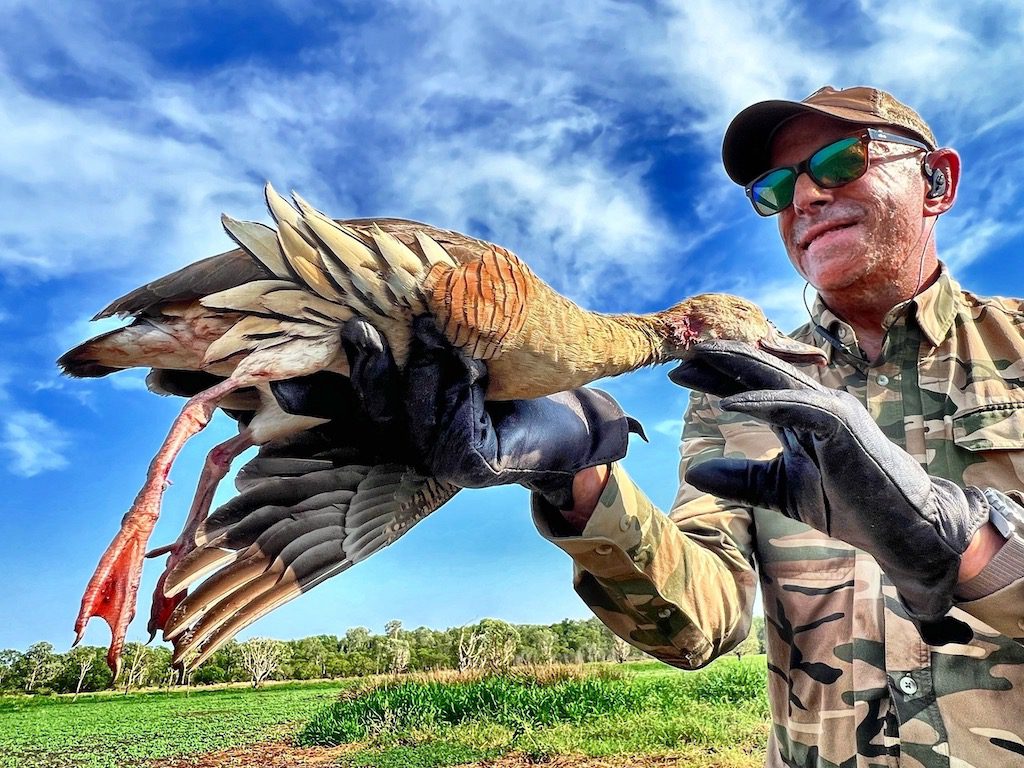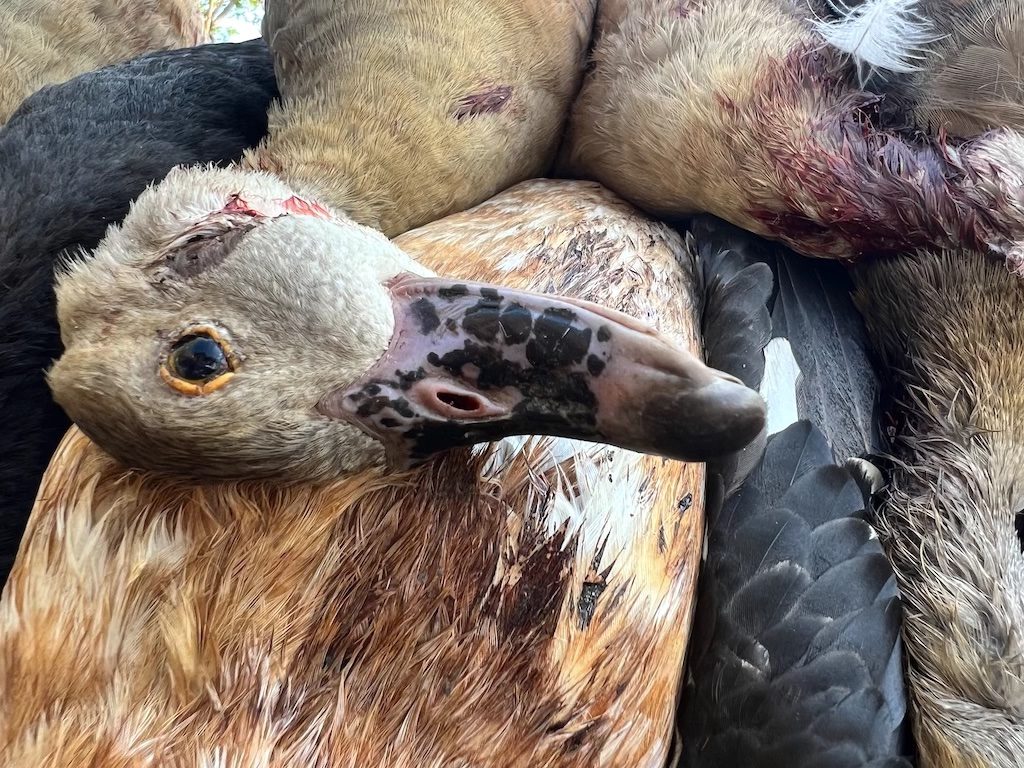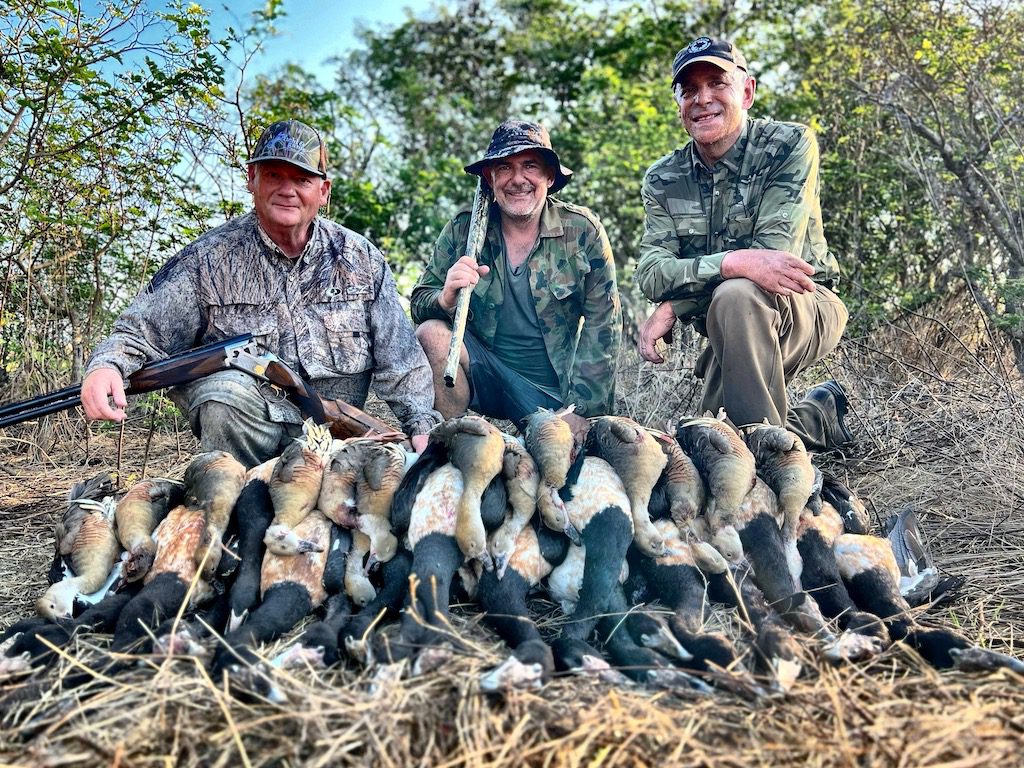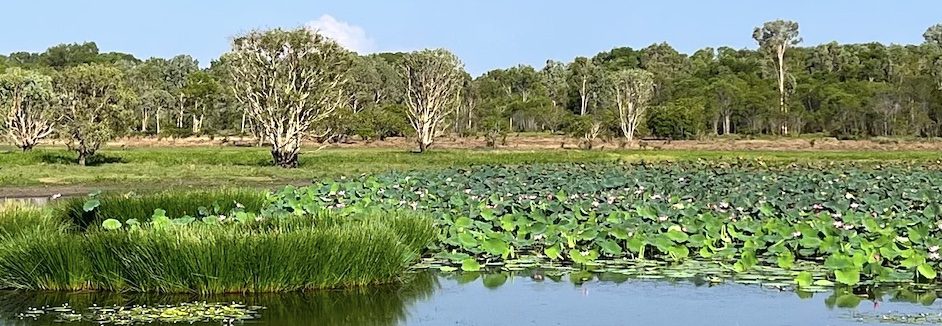Plumed Whistling Duck
Plumed Whistling Duck (Dendrocygna eytoni) is a distinctively elegant duck species endemic to Australia, Indonesia, and Papua New Guinea. This medium-sized duck is characterized by the extremely long flank feathering from which its common name is derived and whistling vocalizations, contributing to its unique presence within wetland ecosystems.
Adult Plumed Whistling Ducks exhibit a striking appearance with a predominantly caramel-brown plumage. The distinguishing feature is the elongated, upward-curving plumes on their flanks, providing a distinctive visual marker. The face is adorned with a black eyestripe, and the underparts are lighter in color. Their pink bills are heavily mottled. Unlike other ducks, they lack the typical quacking sounds and are known for their soft, melodious whistling calls.


Plumed whistling ducks favor a variety of wetland habitats, including freshwater lakes, swamps, and marshes. Their range extends across northern and eastern Australia, as well as parts of Indonesia and Papua New Guinea. The Plumed Whistling Duck’s presence is particularly notable during the wet season when these water bodies provide abundant food resources.
Plumed Whistling Ducks, are colloquially referred to as “grass whistlers,” are primarily herbivores, feeding on aquatic plants, seeds, and insects. Their feeding behavior involves dabbling and grazing on the water’s surface, utilizing their specialized bill to filter food from the water. It’s not uncommon in Northern Territory, Australia, to see them landing into belt-high grass to feed.
Hunted in Northern Territory, Australia, plumed whistling ducks are usually hunted by pass shooting between feeding and roosting areas. They are delicious as tablefare.
Available Hunts
Breeding typically occurs during the wet season. These ducks construct shallow nests on the ground or in vegetation, where the female lays a clutch of eggs. Both parents actively participate in incubation and care for the ducklings upon hatching, emphasizing a cooperative breeding strategy.
Plumed Whistling Ducks are highly social and often form large flocks, especially during the non-breeding season. Their group dynamics play a crucial role in navigation, foraging, and protection against predators. Social interactions are reinforced through vocalizations, including their characteristic whistling calls.As suggested by their name, Plumed Whistling Ducks are known for their melodious, high-pitched whistling calls. These vocalizations serve various purposes, including communication within the flock, signaling danger, and maintaining social bonds.
While the Plumed Whistling Duck is currently not considered globally threatened, localized declines may occur due to habitat loss, water pollution, and hunting. Conservation efforts aim to address these challenges, emphasizing habitat preservation and sustainable management practices to ensure the continued well-being of this species.
The Plumed Whistling Duck stands out as a visually distinctive and vocally unique member of the waterfowl community. Their ecological roles within wetland ecosystems, coupled with their captivating appearance and behaviors, underscore the importance of conservation measures to safeguard their populations and the habitats they depend on. Much thanks to Australia pro-hunting organizations and to hunters for putting their time and money into conservation of this and other waterfowl species.

PLUMED WHISTLER. And then it happened…Third and final bucket-list species here in the Australia Outback a real beaut. While the wandering whistler mostly stays near or over wetlands, not so with the Plumed Whistling Duck. Also called grass whistlers, their feeding habits are more terrestrial. Their crops filled with wild rices, they’ll not usually return to water until much later in the morning, long after the sun’s started baking the landscape and sweat’s dripping from ball cap lids, but that’s what we signed up for. Tawny gray backs, butterscotch undersides, pinkish feet and pink-mottled bills, yellow eye ring, but the most striking feature are the extremely elongated rear flank feathers. Golden blonde with lighter highlights and dark margins, these amazingly long plumes are it’s namesake. I’d already considered walking back across buffalo-cratered landscape under the weight of leather-strapped magpie goose limits when they came in waves. Big mobs of ‘em. Reloading, letting the extremely tall constantly whistling flocks pass, waiting for the right one. Two shots later and a pair fell feet apart with a splash. They’ll end up in university museums for research and education along with many other waterfowl collected. This has been an amazing adventure in a part of the world had never visited, for species had never seen. More than a hunt, it was a scientific expedition to gather invaluable biological data. Given the radical, emotionally fueled ideology of anti-hunting that threatens hunting here, we hunters-conservationists-scientists felt like we were racing the clock for vital information.







